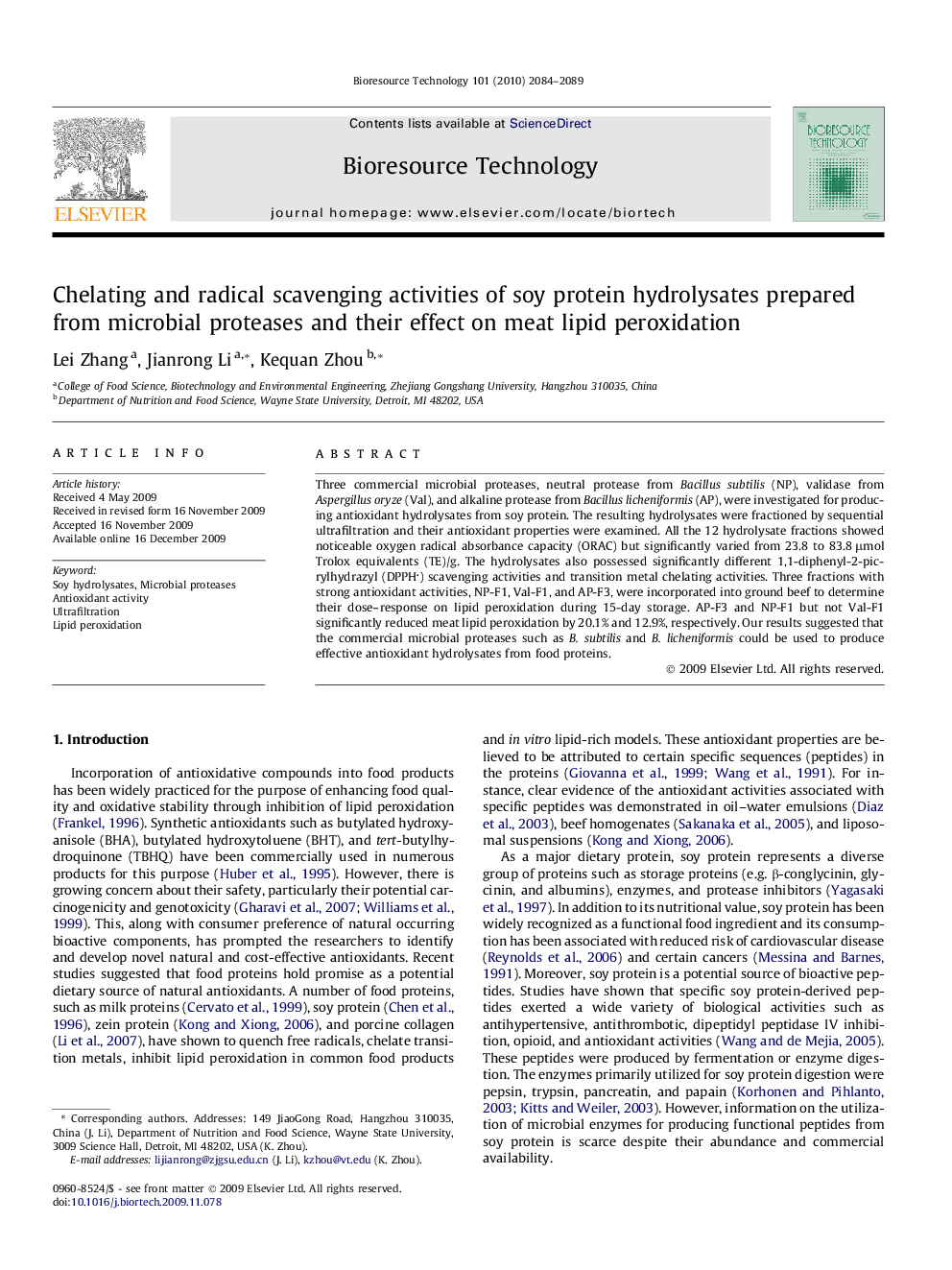| Article ID | Journal | Published Year | Pages | File Type |
|---|---|---|---|---|
| 683829 | Bioresource Technology | 2010 | 6 Pages |
Three commercial microbial proteases, neutral protease from Bacillus subtilis (NP), validase from Aspergillus oryze (Val), and alkaline protease from Bacillus licheniformis (AP), were investigated for producing antioxidant hydrolysates from soy protein. The resulting hydrolysates were fractioned by sequential ultrafiltration and their antioxidant properties were examined. All the 12 hydrolysate fractions showed noticeable oxygen radical absorbance capacity (ORAC) but significantly varied from 23.8 to 83.8 μmol Trolox equivalents (TE)/g. The hydrolysates also possessed significantly different 1,1-diphenyl-2-picrylhydrazyl (DPPH) scavenging activities and transition metal chelating activities. Three fractions with strong antioxidant activities, NP-F1, Val-F1, and AP-F3, were incorporated into ground beef to determine their dose–response on lipid peroxidation during 15-day storage. AP-F3 and NP-F1 but not Val-F1 significantly reduced meat lipid peroxidation by 20.1% and 12.9%, respectively. Our results suggested that the commercial microbial proteases such as B. subtilis and B. licheniformis could be used to produce effective antioxidant hydrolysates from food proteins.
